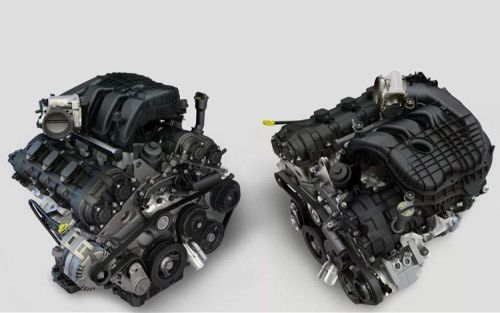Jeep JK Dash A/C Vent Removal
0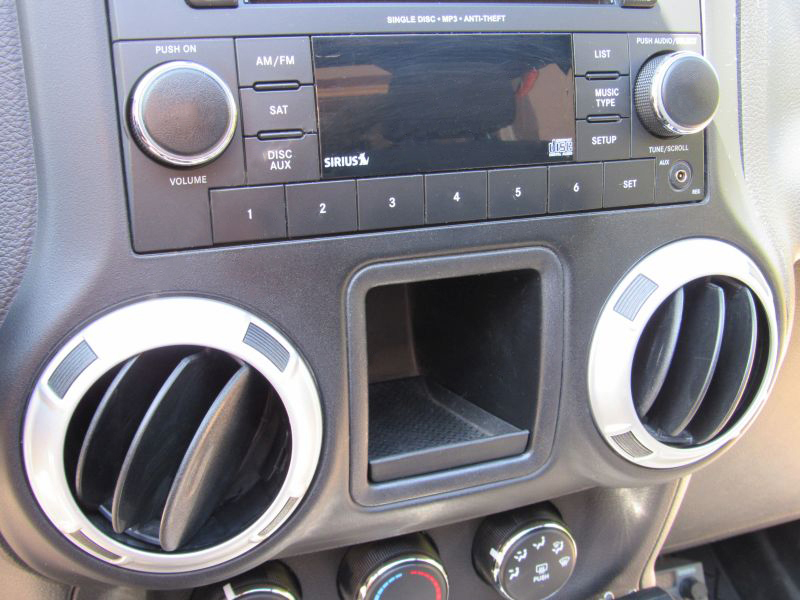 There might come a time when you as a Jeep JK owner find it necessary to remove one or all of the air conditioning outlets located on the dashboard. The most common reason for the A/C vent removal is the desire to paint the stock trim rings in order to color match your Jeep’s exterior and add a fun customization to the interior. You might also need to remove the vent outlet if you accidentally dropped a small item inside the A/C duct and need to retrieve it. After an extremely dry and dusty day wheeling, you might want to do a deep clean of the interior, including cleaning the inside of the air ducts.
There might come a time when you as a Jeep JK owner find it necessary to remove one or all of the air conditioning outlets located on the dashboard. The most common reason for the A/C vent removal is the desire to paint the stock trim rings in order to color match your Jeep’s exterior and add a fun customization to the interior. You might also need to remove the vent outlet if you accidentally dropped a small item inside the A/C duct and need to retrieve it. After an extremely dry and dusty day wheeling, you might want to do a deep clean of the interior, including cleaning the inside of the air ducts.
The Jeep JK A/C vent removal is luckily a simple task, unlike with the Jeep JL where you must remove several dashboard panels first, and can be completed in few minutes as long as you know what you’re doing. It is one of those things that appears impossible to do unless you apply brute force and risk breaking something, until you find out that there is trick to it which makes it super easy to complete. Removing the air conditioning outlet can be performed in few simple steps, using a medium size flathead screwdriver and small flashlight. After you remove the A/C outlet, the stock silver trim ring can be removed by gently prying four plastic tabs holding it in place.
If you prefer to watch a video showing you the process of Jeep JK A/C vent removal, there are countless clips available on YouTube. This is a very simple procedure, however if you are not careful and patient, there is a risk of breakage to the parts you are removing.
(more…)


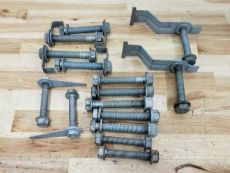 Every Jeep owner who uses their vehicle as intended and goes wheeling, whether it’s simply trail running, overlanding or hardcore rock crawling, should consider having few spare bolts as part of their recovery kit. Your tool bag, recovery gear and spare parts could be the difference between getting stranded in the middle of nowhere, and returning home safely after having a great time on the trail.
Every Jeep owner who uses their vehicle as intended and goes wheeling, whether it’s simply trail running, overlanding or hardcore rock crawling, should consider having few spare bolts as part of their recovery kit. Your tool bag, recovery gear and spare parts could be the difference between getting stranded in the middle of nowhere, and returning home safely after having a great time on the trail.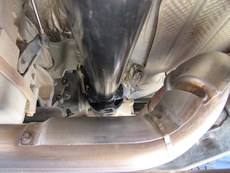 Any Jeep Wrangler owner have experienced weird noises their vehicle makes occasionally. We all realize that Jeeps are not really known for comfort and refinement. They are made for offroading and that’s where they shine, however daily driving, although fun, might make you go insane if you listen to every little unexplained noise your Jeep makes. Some of those noises are due to Wrangler’s shape, resulting in terrible aerodynamics. If you take the top off and install it back without making sure all the seals are perfectly aligned, you will experience loud wind noise. If you upgrade your front bumper or the fenders, you’ll increase drag and the noise will become even louder. Larger, more aggressive tires can be very noisy on asphalt. During daily driving you will most likely hear some squeaking inside the cabin, from the doors or seats for example. There might sometimes be some whining sounds coming from behind the dashboard.
Any Jeep Wrangler owner have experienced weird noises their vehicle makes occasionally. We all realize that Jeeps are not really known for comfort and refinement. They are made for offroading and that’s where they shine, however daily driving, although fun, might make you go insane if you listen to every little unexplained noise your Jeep makes. Some of those noises are due to Wrangler’s shape, resulting in terrible aerodynamics. If you take the top off and install it back without making sure all the seals are perfectly aligned, you will experience loud wind noise. If you upgrade your front bumper or the fenders, you’ll increase drag and the noise will become even louder. Larger, more aggressive tires can be very noisy on asphalt. During daily driving you will most likely hear some squeaking inside the cabin, from the doors or seats for example. There might sometimes be some whining sounds coming from behind the dashboard. Changing the fluid in your Jeep JK front and rear differentials is an important part of routine maintenance. Fresh gear oil insures your differentials are well lubricated and function properly. And, unlike previous Jeep Wranglers, it is not necessary to remove the differential cover in order to do this. It is however recommended that you do so anyway from time to time (possibly every other fluid change) as it will give you a chance to inspect your gears and catch any damage or unusual wear.
Changing the fluid in your Jeep JK front and rear differentials is an important part of routine maintenance. Fresh gear oil insures your differentials are well lubricated and function properly. And, unlike previous Jeep Wranglers, it is not necessary to remove the differential cover in order to do this. It is however recommended that you do so anyway from time to time (possibly every other fluid change) as it will give you a chance to inspect your gears and catch any damage or unusual wear. 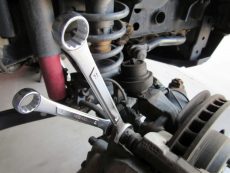 During routine maintenance and after doing any kind of modification to your steering, suspension, or drive train, all bolts and nuts should be checked to ensure that they have been tightened to specification.
During routine maintenance and after doing any kind of modification to your steering, suspension, or drive train, all bolts and nuts should be checked to ensure that they have been tightened to specification. A/C blend door actuator in your Jeep JK is a very important part of the heating and cooling system and is responsible for controlling the temperature of the air blowing thru the vents and into the cabin. To blow heat into the cabin, the blower motor sends air through the heater core and on through the dash vents. But when heat is not desired, the blend door actuator directs that airflow away from the heater core. Unfortunately blend door actuators can fail at some point and cause the inability to change the air temperature inside your Jeep. The reason I needed to replace the blend door actuator in my Jeep was due to the horrible and loud ticking/grinding noise that it was making every time I put the key in the ignition. I also noticed that the actuator resets itself and makes the same noise after about two minutes from turning off the engine. With the Jeep being topless and doorless, and me using public parking lots, I was afraid someone walking by would freak out and call the cops, thinking my Jeep was about to explode…
A/C blend door actuator in your Jeep JK is a very important part of the heating and cooling system and is responsible for controlling the temperature of the air blowing thru the vents and into the cabin. To blow heat into the cabin, the blower motor sends air through the heater core and on through the dash vents. But when heat is not desired, the blend door actuator directs that airflow away from the heater core. Unfortunately blend door actuators can fail at some point and cause the inability to change the air temperature inside your Jeep. The reason I needed to replace the blend door actuator in my Jeep was due to the horrible and loud ticking/grinding noise that it was making every time I put the key in the ignition. I also noticed that the actuator resets itself and makes the same noise after about two minutes from turning off the engine. With the Jeep being topless and doorless, and me using public parking lots, I was afraid someone walking by would freak out and call the cops, thinking my Jeep was about to explode… Changing the engine oil is a necessary part of routine Jeep maintenance and really, it’s something that anyone can do. In fact, thanks to the design of the 3.6L V6 Pentastar engine in a Wrangler JK, it’s something that’s easier to do than ever before.
Changing the engine oil is a necessary part of routine Jeep maintenance and really, it’s something that anyone can do. In fact, thanks to the design of the 3.6L V6 Pentastar engine in a Wrangler JK, it’s something that’s easier to do than ever before.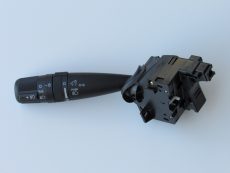 A multi-function switch, just as the name suggests, controls several different functions related to the lights of your Jeep. Using this one switch you turn on the headlights, fog lights, control turn signals, dashboard lights and dome lights. Unfortunately there might come a time when you notice that something about your lights doesn’t seem right. There could be a few different reasons for your lights or dash indicators to start acting strange. First thing you should always check is the light bulbs. Unless you have all LED lights, check your headlights and turn signals to make sure that all light bulbs work. You might have a fuse that is damaged and needs replacing. You can inspect the fuses an replace the damaged one.
A multi-function switch, just as the name suggests, controls several different functions related to the lights of your Jeep. Using this one switch you turn on the headlights, fog lights, control turn signals, dashboard lights and dome lights. Unfortunately there might come a time when you notice that something about your lights doesn’t seem right. There could be a few different reasons for your lights or dash indicators to start acting strange. First thing you should always check is the light bulbs. Unless you have all LED lights, check your headlights and turn signals to make sure that all light bulbs work. You might have a fuse that is damaged and needs replacing. You can inspect the fuses an replace the damaged one. Many Jeep owners don’t even realize there is such thing as a cabin air filter in their vehicle. After all, when you drive topless and doorless, who needs a filter for the cabin. I count myself as one of those jeepers. The topic of cabin air filter did not even cross my mind for the first year of owning my Jeep. I only thought about it after one extremely dusty Jeep run. Some of you who have done the Backdoor to Crown King trail, Box Canyon in Florence or any trail in Arizona for that matter, might recall that before you get to the fun part of the trail you have to drive down a dirt road for a few miles. With several vehicles in your group that gets crazy dusty.
Many Jeep owners don’t even realize there is such thing as a cabin air filter in their vehicle. After all, when you drive topless and doorless, who needs a filter for the cabin. I count myself as one of those jeepers. The topic of cabin air filter did not even cross my mind for the first year of owning my Jeep. I only thought about it after one extremely dusty Jeep run. Some of you who have done the Backdoor to Crown King trail, Box Canyon in Florence or any trail in Arizona for that matter, might recall that before you get to the fun part of the trail you have to drive down a dirt road for a few miles. With several vehicles in your group that gets crazy dusty.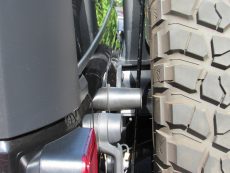 One of the most common upgrades a lot of jeep owners do is a set of new wheels and tires. Once you upgrade your wheels to ones with less backspacing, and you still install your spare tire on your factory tailgate carrier, you’ll notice that your factory rubber bump stops no longer touch your tire and therefore do not protect your tailgate from vibrations caused by the spare tire. This vibration can potentially lead to damage to your tailgate and the hinges.
One of the most common upgrades a lot of jeep owners do is a set of new wheels and tires. Once you upgrade your wheels to ones with less backspacing, and you still install your spare tire on your factory tailgate carrier, you’ll notice that your factory rubber bump stops no longer touch your tire and therefore do not protect your tailgate from vibrations caused by the spare tire. This vibration can potentially lead to damage to your tailgate and the hinges.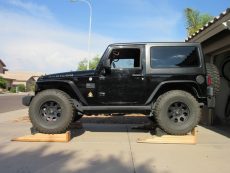 A lot of work you might want to do on your Jeep, SUV or truck can be done on the ground level and doesn’t require jacking up the vehicle.
A lot of work you might want to do on your Jeep, SUV or truck can be done on the ground level and doesn’t require jacking up the vehicle.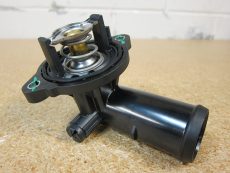 This post is my attempt to describe the process of replacing a
This post is my attempt to describe the process of replacing a  Offroad vehicle recovery is a very important and very broad topic, that every offroading junkie should be familiar with. Every responsible person should be prepared for situations when their offroading adventure is interrupted by a situation where recovery is necessary. The list of recovery gear is long and includes everything from a shovel to a winch. There are many opinions on what are best brands of recovery gear of course. People also have different opinions when it comes to best recovery techniques and minimum requirements for your recovery gear.
Offroad vehicle recovery is a very important and very broad topic, that every offroading junkie should be familiar with. Every responsible person should be prepared for situations when their offroading adventure is interrupted by a situation where recovery is necessary. The list of recovery gear is long and includes everything from a shovel to a winch. There are many opinions on what are best brands of recovery gear of course. People also have different opinions when it comes to best recovery techniques and minimum requirements for your recovery gear.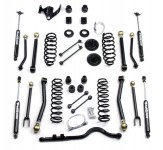 Many first time Jeep owners don’t realize that a stock Jeep is not designed for the heavy of road use often seen in magazines and on TV. If you want to have the ability to take your Jeep on those rocky trails and steep hills, you’re going to need an
Many first time Jeep owners don’t realize that a stock Jeep is not designed for the heavy of road use often seen in magazines and on TV. If you want to have the ability to take your Jeep on those rocky trails and steep hills, you’re going to need an 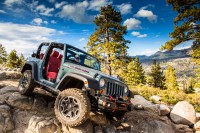 Just as 2014 Jeep sales are set to get underway, new details regarding the next generation of Wrangler rumored to debut in 2016 are coming out. CEO Mike Manley hinted strongly that Chrysler’s new EcoDiesel V-6 very well may find its way into the new Wranglers as an option for 2016.
Just as 2014 Jeep sales are set to get underway, new details regarding the next generation of Wrangler rumored to debut in 2016 are coming out. CEO Mike Manley hinted strongly that Chrysler’s new EcoDiesel V-6 very well may find its way into the new Wranglers as an option for 2016.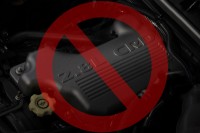 There is a huge number of Jeep enthusiasts in the US who would like to own a diesel-powered Wrangler. I am one of them. Unfortunatelly Chrysler does not offer a diesel engine in the US. Yet we all know that it is being sold in Europe and Australia (in Europe almost 50% of all new cars sold today are diesel-powered, that number in the US is 3%!).
There is a huge number of Jeep enthusiasts in the US who would like to own a diesel-powered Wrangler. I am one of them. Unfortunatelly Chrysler does not offer a diesel engine in the US. Yet we all know that it is being sold in Europe and Australia (in Europe almost 50% of all new cars sold today are diesel-powered, that number in the US is 3%!).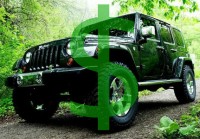 Based on a visit to a local dealership, here’s what the 2012 Wrangler prices look like. The base price is for a Rubicon, both two-door and Unlimited. There is almost no price change for 2012, which is great news, considering the fact that you get a new engine and new automatic transmission. Currently available 2011 Rubicon model’s MSRP is $29,820 for two-door and $33,320 for Unlimited. Obviously since dealers want to get rid of these cars, to make room for the new 2012 model, you can make a good deal and get a nice discount, including $1000 factory cash rebate or 0% financing for up to 60 months.
Based on a visit to a local dealership, here’s what the 2012 Wrangler prices look like. The base price is for a Rubicon, both two-door and Unlimited. There is almost no price change for 2012, which is great news, considering the fact that you get a new engine and new automatic transmission. Currently available 2011 Rubicon model’s MSRP is $29,820 for two-door and $33,320 for Unlimited. Obviously since dealers want to get rid of these cars, to make room for the new 2012 model, you can make a good deal and get a nice discount, including $1000 factory cash rebate or 0% financing for up to 60 months. With more power and efficiency, the 2012 Jeep Wrangler is demanding more attention towards it. The vehicle has eventually received the Chrysler 3.6 liter Pentastar V6 engine by replacing its 3.8 liter V6 engine.
With more power and efficiency, the 2012 Jeep Wrangler is demanding more attention towards it. The vehicle has eventually received the Chrysler 3.6 liter Pentastar V6 engine by replacing its 3.8 liter V6 engine.